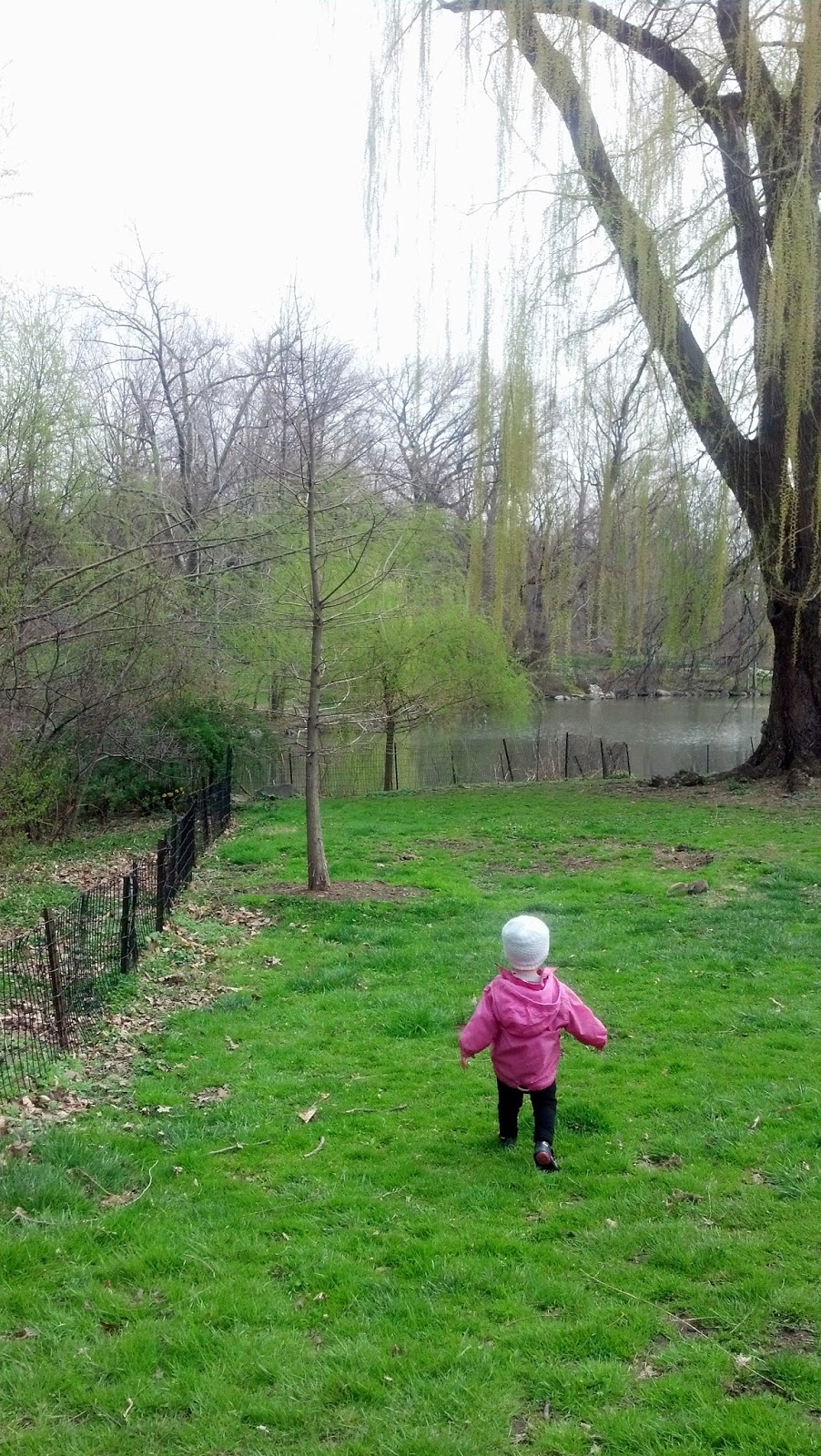"The best thing, though, in that museum was that everything always stayed right where it was.Nobody'd move. You could go there a hundred thousand times and that Eskimo would still be just finished catching those two fish, the birds would still be on their way south, the deers would still be drinking out of that water hole...and that squaw with the naked bosom would still be weaving that same blanket. Nobody'd be different. The only thing that would be different would be you...I mean you'd be different in some way- I can't explain what I mean. And even if I could, I'm not sure I'd feel like it. - J.D. Salinger, from The Catcher in the Rye.
 |
| Photo of a diorama in the Theodore Roosevelt Rotunda. The deer drinking from that water hole. |
The days following were long and short at the same time. The hours were endless in their hospital sameness but daylight ended abruptly at 4:30. November was drawing to a close. I sat by mother's bed and read Longfellow.
Let us then be up and doing, with a heart for any fate. Still achieving, still pursuing,learn to labor and to wait.It was one of her favorite poems, but as for many people who have sat bedside in a dire situation, the reading was as much for me as for my mother. When there was a flicker of recognition a week out, and when my mother finished the poem's lines at the end of the second week, I decided Longfellow had triumphed over the attending physician with the outsize ego and shrunken heart.
Three weeks after the stroke, my mother and I stood in the Museum of Natural History, looking at this:
I had never seen the famous origami "holiday tree." Allegedly, museum staff start folding dinosaurs and crustaceans in July to prepare. Perhaps this is as true as the myth of Santa's elves hammering in his workshop all year, but I hope it's true. At any rate, the tree is glorious.
My mother once told me that lighting is more important than makeup. "There is no such thing as reality, there is only lighting," she said. I remembered this bit of wisdom when I realized that the glossy paper ornaments are lit from beneath by carefully placed floodlights to create the illusion of icicles and snow floating in mid-air.
In December of 2012, I took my then one-year old daughter to see that tree.
And it wasn't there.
It was somewhere else.
Instead of taking center stage in the foyer outside the Hall of Biodiversity, it had been placed (shoved, to my eye) in a bright corner of the huge hall that houses the canoe. And it looked small and dingy. It was an insult to the eye after having seen it lit perfectly in the wood-paneled elegance of the foyer at 81st Street three years before. I was outraged.
I glumly took a photo anyway to commemorate the occasion of my child's first visit to this tree . She had only just learned to stand on her own:
Still, I complained to the staff. I was told that I was not the first to have expressed dismay at the tree's new home. So I assumed that this year it would be righted: surely the museum would have come to its senses or at least bowed to the the preference of its thousands of visitors.
I was determined to get to the bottom of this. Why would they make such a terrible change? Look at how dingy and flat the tree looks here!
In the course of writing about this small shift at the museum I have come upon the reason it matters so very much to me. I was with some friends today, also accompanying their toddlers on the journey through the dark, sensual and overpowering space that is one of the two largest treasures of museums in New York. I have no doubt I embarrassed them by expressing my outrage to the security guards blocking off the tree today. The tree-lighting ceremony happened on this particular morning, adding weight to the blow: it was happening as I stood beyond its ropes, powerless! But what control do security guards or staffers at counters nearby have over it? Why should they care and more importantly, why was it so desperately important to me?
The best thing, though, in that museum was that everything always stayed right where it was.Nobody'd move. Nobody'd be different. The only thing that would be different would be you...I mean you'd be different in some way- I can't explain what I mean. And even if I could, I'm not sure I'd feel like it.My mother was different when she and I visited the museum in December of 2009. She'd lost much of her short-term memory, her eyes didn't focus in quite the same way, she had trouble distinguishing between a lemon and an apple. We went into a place of her youth, (and mine, if only by way of J.D. Salinger) and witnessed a beautiful Christmas tree highlighting the wonder of the museum and New York in general but especially at Christmastime.
So the tree, like everything else in the museum, should always be there. Right there near the entrance on 81st. It should be lit from beneath in the wood-paneled foyer the way it was the first time I laid eyes on it. The museum is meant to be reliable, to smell always as if it's raining outside and you are in the only cozy warm place in the world. (Salinger.)
I can't explain what I mean. And even if I could, I'm not sure I'd feel like it.
 |
| The origami tree in its original location. |
 |
| Visit to the Museum with Mom, December 2009. |

.jpg)



.jpg)

.jpg)



.jpg)
